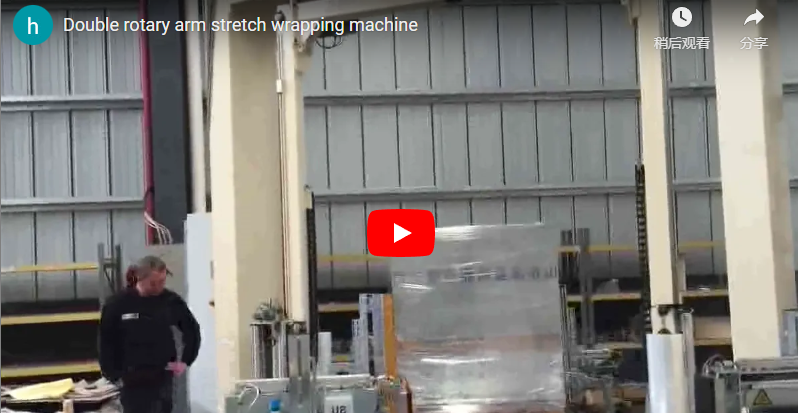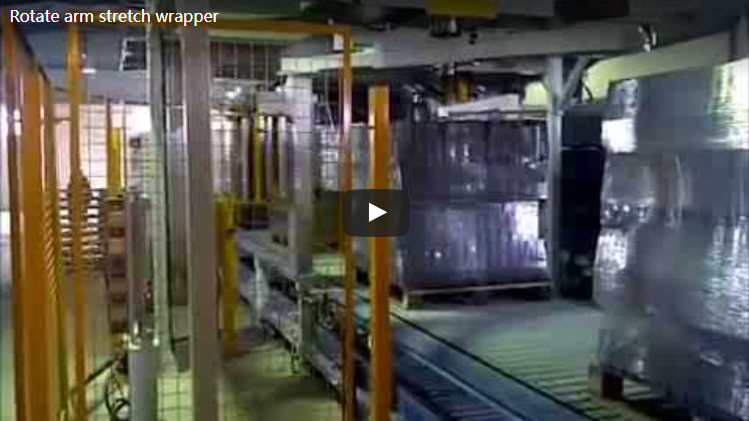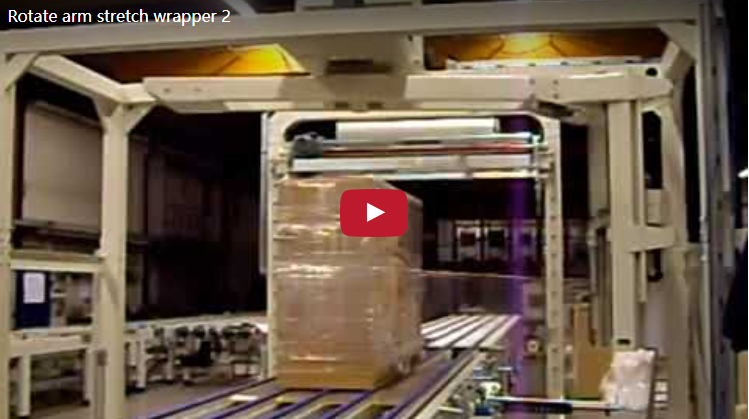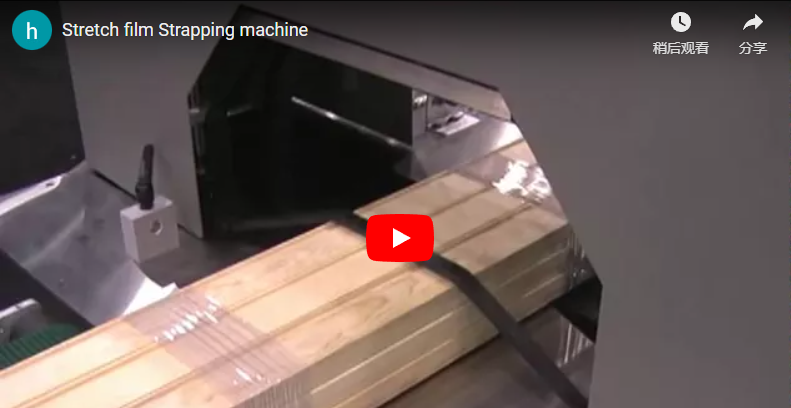Mastering Load Containment: A Fabricator's Guide to the Semi-Auto Rotary Arm Stretch Wrapper
In any busy fabrication shop, warehouse, or distribution center, efficiently and securely wrapping pallet loads for storage or transit is crucial. Damaged goods due to poor load containment can lead to significant costs and customer dissatisfaction. While various stretch wrapping technologies exist, the semi-auto rotary arm stretch wrapper stands out as a robust and versatile solution, particularly well-suited for heavy, unstable, or irregularly shaped loads often encountered in metal fabrication and industrial environments.
This guide dives deep into the technical aspects, operational benefits, and practical considerations of using a semi-auto rotary arm wrapper, drawing on real-world experience to help you determine if it's the right fit for your operation.
Watch the semi-auto rotary arm wrapper in action.
1. Understanding the Semi-Auto Rotary Arm Stretch Wrapper: The Basics
At its core, a semi-auto rotary arm stretch wrapper is a specialized pallet wrapping machine designed to apply stretch film around a stationary pallet load. Unlike turntable wrappers where the pallet spins, here the load remains fixed on the floor or a conveyor, while an overhead arm carrying the stretch film roll rotates around it.
How it Works (Operator's View):
- Load Placement: The operator positions the palletized load within the designated wrapping zone using a forklift or pallet jack.
- Film Attachment: The operator manually attaches the leading edge of the stretch film to the pallet base or the load itself.
- Cycle Start: The operator initiates the wrapping cycle via the control panel.
- Wrapping Process: The rotary arm begins to circle the stationary load, dispensing stretch film from the film carriage system. Simultaneously, the film carriage typically moves vertically up and down the mast to ensure complete coverage from top to bottom.
- Customization: Pre-set parameters (like top/bottom wrap counts, arm rotation speed, film tension, and pre-stretch levels) dictate the wrapping pattern and force.
- Film Cut & Seal (Optional): On cycle completion, many semi-auto models require the operator to manually cut the film tail and wipe it down against the load. Some higher-end semi-autos might feature automatic film clamp, cut, and wipe-down systems.
- Load Removal: The securely wrapped pallet is ready for removal.
This "load stationary" approach is the defining advantage, preventing potential load shifting or toppling that can occur with heavy or unstable products on a spinning turntable.
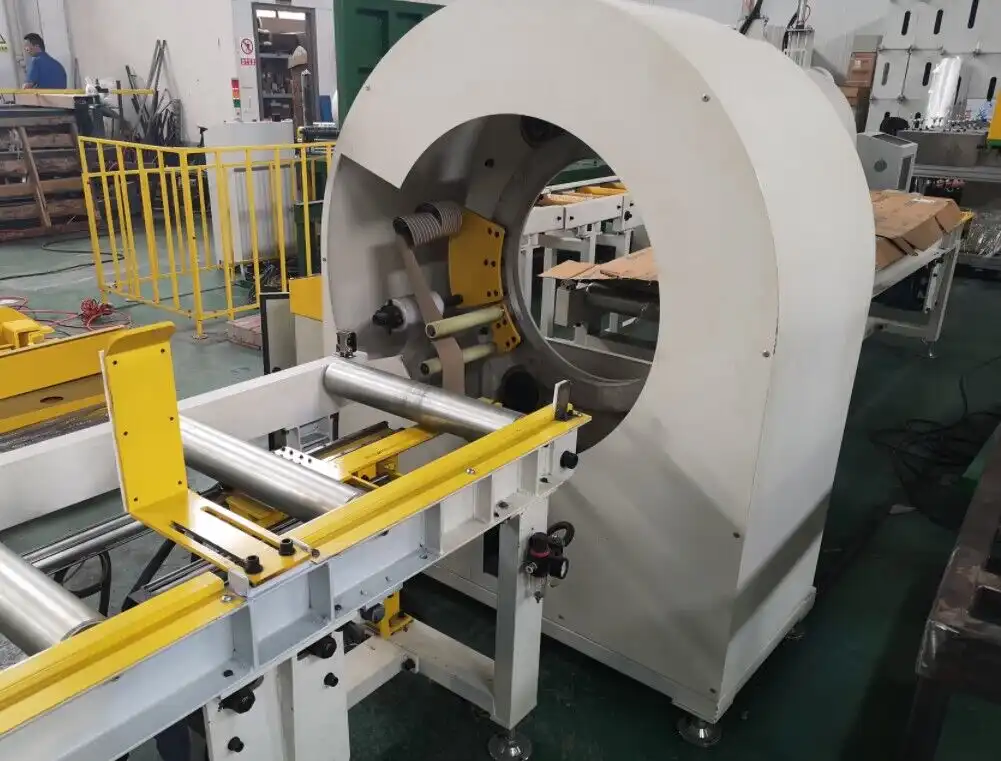
2. Technical Deep Dive: Key Specifications and Features
When evaluating a semi-auto rotary arm wrapper, understanding the key technical specifications is essential:
- Maximum Load Size (L x W): Defines the largest pallet footprint the machine can accommodate (e.g., 50" x 50", 60" x 60").
- Maximum Load Height: The tallest pallet the machine can wrap, determined by the mast height (e.g., 80", 98", 110").
- Maximum Load Weight: Crucially, these machines often have unlimited weight capacity since the load sits directly on the floor. This is a major benefit for heavy industrial products.
- Arm Rotation Speed: Typically measured in RPM (Revolutions Per Minute), affecting throughput (e.g., 12-15 RPM).
- Film Carriage System:
- Pre-stretch: Specifies the percentage the film is elongated before application (e.g., 200%, 250%). Higher pre-stretch maximizes film yield and improves load containment. Powered pre-stretch systems are standard.
- Film Type: Standard 20" or 30" machine-grade stretch film rolls.
- Tension Control: Electronic controls allow precise adjustment of the film tension applied to the load, critical for varying load types.
- Control System: Usually PLC-based (Programmable Logic Controller) with a user-friendly HMI (Human Machine Interface) touch screen. Allows operators to:
- Set top and bottom wrap counts independently.
- Adjust carriage ascent/descent speeds.
- Control arm rotation speed.
- Set film tension levels.
- Create and save multiple wrap programs for different load profiles.
- Power Requirements: Typically 220V or 480V 3-phase power, depending on the model and configuration.
- Safety Features: Essential components include emergency stop buttons, safety bumpers on the rotating arm, and often options for safety fencing or light curtains around the wrap zone.
Understanding these parameters ensures you select a machine configuration that matches your specific load characteristics and throughput requirements.
3. The Operator's Perspective: Day-to-Day Use and Considerations
From an operator's standpoint, semi-auto rotary arm wrappers offer a balance between automation and manual control.
- Ease of Use: Modern control panels are generally intuitive, making training relatively straightforward. Setting up different wrap recipes for recurring load types saves time and ensures consistency.
- Workflow: The process involves more operator interaction than fully automatic systems (positioning load, attaching/cutting film) but significantly less manual effort and more consistency than hand wrapping.
- Maintenance: Routine tasks are manageable:
- Changing film rolls.
- Keeping sensors clean (photo-eyes detecting load height).
- Checking roller conditions in the film carriage.
- Lubricating moving parts as per the manufacturer's schedule.
- Troubleshooting: Common issues might include:
- Film Breaks: Often due to incorrect tension settings, sharp corners on the load, or poor film quality. Adjusting tension or using edge protectors can help.
- Uneven Wraps: Could indicate issues with carriage speed synchronization or inconsistent arm rotation.
- Sensor Errors: Dirty photo-eyes are a frequent culprit.
Having operators trained not just on operation but also basic troubleshooting and maintenance contributes significantly to uptime.
4. Why Choose a Rotary Arm? Advantages Over Other Systems
The decision to opt for a semi-auto rotary arm wrapper often comes down to specific application needs:
- vs. Turntable Wrappers:
- Stability: The clear winner for very heavy (over 4,000-5,000 lbs), tall, unstable, or oddly balanced loads that might shift or fall on a spinning platform.
- Weight Capacity: Virtually unlimited since the load rests on the floor.
- Footprint: Can sometimes require a larger operational footprint due to the arm's swing radius.
- vs. Fully Automatic Systems:
- Cost: Significantly lower initial investment compared to fully automated rotary arm or ring wrappers.
- Flexibility: Better suited for lower to medium throughput environments or operations with highly variable load types where full automation isn't easily justified.
- Simplicity: Generally fewer complex components (like automatic conveyors) mean potentially simpler maintenance.
- Ideal Applications:
- Metal fabrication shops (wrapping pallets of parts, assemblies, raw materials).
- Building materials (doors, windows, bagged goods).
- Distribution centers handling mixed or unstable loads.
- Operations where floor-level loading/unloading is preferred.
5. Optimizing Performance: Getting the Most Out of Your Wrapper
Simply having the machine isn't enough; optimizing its use is key:
- Film Selection: Use high-quality machine-grade stretch film designed for powered pre-stretch systems. Consult with film suppliers to find the right gauge and formulation for your loads.
- Master Pre-stretch: Utilize the highest pre-stretch level possible without compromising load integrity or causing film breaks. This maximizes film economy.
- Correct Tension: Apply enough tension to secure the load tightly (load containment force) but not so much that it crushes the product. Experiment and save optimal settings in wrap programs.
- Containment Force Measurement: For critical applications, periodically use a containment force measurement tool to verify that your wrap settings are achieving the desired stabilization.
- Preventative Maintenance: Adhere strictly to the manufacturer's recommended maintenance schedule. This prevents costly downtime and ensures consistent performance.
6. Safety First: Operating Your Rotary Arm Wrapper Securely
Given the moving overhead arm, safety is paramount:
- Awareness: Operators must be trained on the machine's operating characteristics and potential hazards, particularly the rotating arm's movement zone.
- Safety Features: Ensure all built-in safety mechanisms (E-stops, arm bumpers) are functional. Consider adding safety fencing or light curtains to restrict access to the wrapping zone during operation if not already equipped.
- Clear Area: Keep the wrapping area clear of personnel, obstructions, and debris during the cycle.
- Lockout/Tagout: Implement proper lockout/tagout procedures before performing any maintenance or clearing film jams.

Conclusion: A Reliable Workhorse for Challenging Loads
The semi-auto rotary arm stretch wrapper proves itself as an efficient, reliable, and cost-effective solution for securing pallet loads, especially those that challenge traditional turntable systems. Its ability to handle heavy, tall, and unstable items by keeping the load stationary makes it invaluable in many industrial settings, including demanding fabrication environments. By understanding its technical capabilities, operational nuances, and safety requirements, businesses can leverage this technology to significantly improve load containment, reduce product damage during transit, and optimize their end-of-line packaging processes.
For more information on various stretch wrapping solutions tailored to your needs:
Explore Stretch Wrapping Machine Options
info@fhopepack.com

